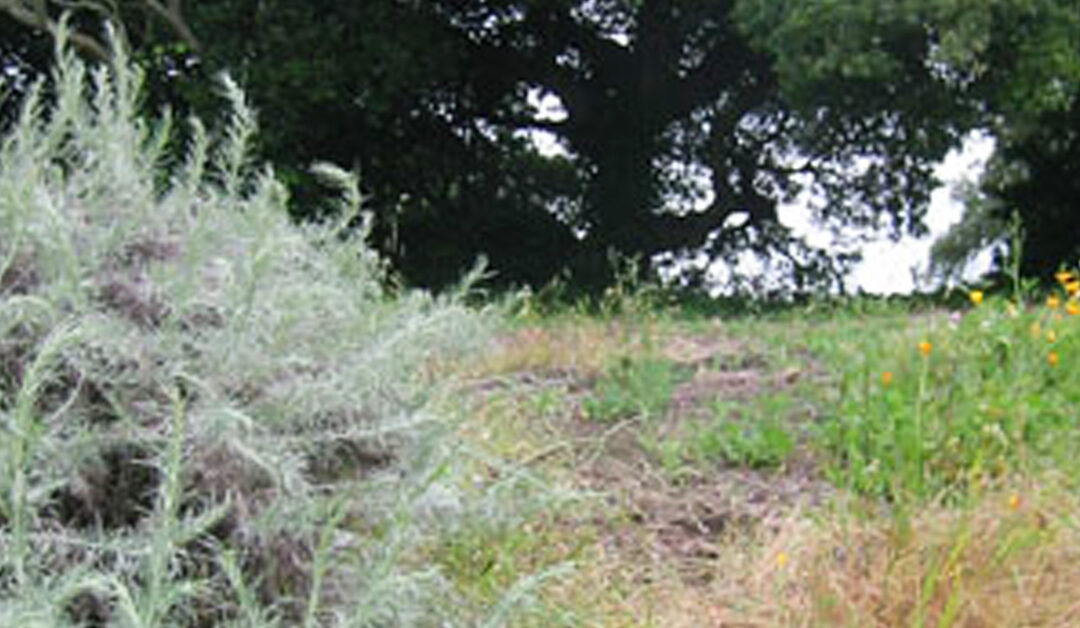Words bestow immortality: just as the book outlives its author, a name can outlast its human corollary. Many California landmarks bear the names of historic families, for example, providing a subtext that enhances our sense of local identity. The story behind each name can add even greater value, much like the bones of our ancestors that enrich the earth in deepening layers of fertility.
Take Mount Wanda, a golden-brown foothill of grassland and old-growth oak perched between the East Bay’s rural Alhambra Valley and the highly industrial town of Martinez. This 660-foot peak was named for John Muir’s eldest daughter, an apt parallel if we recognize such preserved natural areas as the great man’s “other progeny,” and his more enduring legacy. Muir married into an established local ranching family and lived here in Martinez from 1882 until his death in 1914. His modest writing desk, still there on an upper floor of the old family mansion, witnessed the work that saved Yosemite, launched the Sierra Club, and laid the foundation for the National Park Service. When necessity prevented Muir from traveling to the high Sierra, he contented himself with long walks through these low foothills, where the time-gnarled limbs of the oaks served as a lifeline to the desolate nature he craved. Today the 325 acres of Mt. Wanda, together with the Muir house and the adjacent Martinez Adobe, are open to the public as a national historic site.
These old oaks, untouched by industry, stand in stark contrast to the chemical plants and oil refineries of modern Martinez. The valley oak (Quercus lobata) lives to be 300 years old with an immense crown often topping 100 feet in both height and span; its silhouette of gracefully drooping limbs assumes the shape of a gigantic grape vine, and its deciduous leaves are deeply lobed, hence the specific epithet. The blue oak (Q. douglasii) earns its common name from the bluish-green tint of its foliage, also deciduous, and it can reach 20-60 feet tall growing in thin soils or from crevices between rocks. The coast live oak (Q. agrifolia), with its burly trunk, and the interior live oak (Q. wislizenii), usually of more modest stature, add their serrated evergreen leaves to the canopy. The word “Quercus” comes from Latin; it is an ancient name for oak that predates ancient Rome.
Closer to the ground, populations of creeping snowberry (Symphoricarpos mollis) spread themselves across open spaces on the woodland floor. The soft oval leaves catch diffused light in magnificent shades of warm green, and tremble in the slightest breeze like quaking aspen. Delicate pinkish-red flowers held under the leaf nodes will mature by late summer into clusters of small berries (the genus is named after the Greek words for “bearing fruit together”), and the trailing foot-high branches will root wherever they touch the ground, making this an effective groundcover for dry partial shade.
Hiking through these hoary woodlands, the sounds of the nearby highway begin to fade, and the melody of birdsong underscores an experience of the old California that so captivated the likes of John Muir. Yet Muir represents only a recent layer of local history. Delving further, we might recall Don Ygnacio Martinez, the early 19th-century commandante of the Presidio of San Francisco; his 17,000-acre land grant from the Mexican government in 1824 brought him here to the oak-studded Alhambra Valley, where his eponymous town later rose on the southern bank of the Carquinez Strait. In 1849, his son built the adobe house that still stands behind Muir’s mansion, the so-called Martinez Adobe, whose sturdy walls of clay two feet thick embody the heritage of Mexico and remind us that California’s history began much earlier than the Gold Rush.
For its part, the Carquinez Strait memorializes (with Spanish spelling) a group of even earlier inhabitants: the Karkines, a tribe of Costanoan Indians who once lived among these hills for thousands of years. They revered the oak as their primary food source, and regularly set fires in this dry landscape to increase the acorn harvest and to regenerate the grassland ecosystems. Those of us who were startled by last month’s 250-acre grass fire outside Martinez should take heart in the long and impressive pedigree that such man-made conflagrations have enjoyed in this region.
But the internal combustion engine, harnessing the power of fire in a different way, has transformed our natural landscapes almost beyond recognition. Freeways now carry the rumbling automobile where once only footsteps could tread, mingling gasoline fumes with the breath of the pine and the waterfall, and much of our sense of inviolable nature has been lost. The John Muir house, for example, is now separated from Mt. Wanda by a stretch of Hwy. 4 named the John Muir Parkway, which sobriquet the great naturalist would never have tolerated during his lifetime. To name a highway after Muir is to ignore everything for which Muir stood, a posthumous insult of the highest order. Indeed, on the state of tourism in America he once remarked, “Most travelers content themselves with what they may chance to see from car windows…clinging to the battered highways like drowning sailors to a life raft.”
Heed Muir’s words. Leave your car in the “Park and Ride” lot on Franklin Canyon Rd. at the corner of Alhambra Ave., and take the shoe-leather express to the top of Mount Wanda. From this vantage, behold the smokestacks of Martinez below you, and compare them to the stands of blue and valley oak that tower above. Are we getting closer? Muir himself is buried nearby in his family cemetery; try to hear his voice in the wind, and listen to what he’s saying. True, Mount Wanda is a far cry from Yosemite — yet here in such pockets of natural solitude, we find that going out for a walk is really more like going in.
* * *
The only highway feature named for writer and landscape designer Geoffrey Coffey is the onramp to the infobahn at www.geoffreycoffey.com.

Madroño president Geoffrey Coffey started the company in 2005 out of the back of a pickup truck. His garden column, “Locals Only”, first appeared in the San Francisco Chronicle in 2002. He lives in San Francisco with his wife and two children, where he also sings and thumps the bass for Rare Device.


